
A tremendous value for money…that is, if you don’t mind eating it.
Mega discount supermarket Lamu, originally an Okayama business, has become a part of everyday life for many people in the Chugoku, Shikoku, Kinki, and Kyushu regions of Japan (basically most of the western/southwestern half of the country) . With its gaudy, bright pink facade and hot pink logo, the store has become an icon for people in the southwestern part of Japan thanks to their insanely cheap prices.
What makes those prices almost unbeatable is the how Lamu keeps its costs low in lots of little ways. For example, they don’t use shelves, and simply stack products in their cardboard shipping boxes. It sort of feels like shopping at a wholesale store.
They also don’t wrap their bentos in unnecessary extra packaging.
▼ No plastic wrap or rubber bands.
Our Japanese-language reporter Ikuna Kamezawa, a Tokyo resident but a regular traveler, happened to be near a Lamu on a recent trip and decided to stop by. While she was browsing in the produce section, she came upon a bento boxed lunch that caught her eye. Called the “Manpuku Nori Bento”, or the “Satisfying and Lucky Seaweed Bento”, it sold for the marvelous price of just 198 yen (US$1.73).
Unlike most bento, however, which come in plastic containers with a clear lid, this one was inside a white styrofoam container wrapped with special paper, so Ikuna couldn’t see what was inside.
▼ For reference, they also had regular bento packages with a clear plastic lid. Only the Manpuku Nori Bento was different.
It was all very mysterious, and Ikuna couldn’t repress her curiosity. She had to buy it and see what it contained.
Now, Lamu might have a policy of reducing costs where it can, but that doesn’t mean it cuts on customer service. Naturally, they have microwaves onsite so that customers can warm up their bento after they buy them. So Ikuna gratefully popped hers in for a good few minutes, and it came out nice and piping hot. After that, she couldn’t wait to see what was inside.
Ooh! It was a pretty standard-looking seaweed bento! Seaweed bento, or “noriben” in Japanese, are generally defined as rice covered in a strip of dried seaweed served together with seafood accompaniments, which are usually fried. This noriben checked all the boxes of what you would expect, at least at first glance.
Weighing in at 353 grams (12.4 ounces), it was about the size of an average noriben, but with its crazy low price of 198 yen, Ikuna got a lot of bang for her buck. Plus, the quality was pretty good. The fried white fish, which is a common feature in noriben, was really crispy and delicious.
The chikuwa tempura, a deep-fried fish paste stick that’s another common noriben component, was huge and took up the whole length of the container. It was way more substantial than your average chikuwa tempura.
But after all those greasy fried foods, Ikuna wanted a nice palate cleanser, and therein lies the true pleasure of eating noriben, since it comes with a nice palate cleanser right in the box: fluffy white rice, dusted with furikake rice seasoning and topped with seaweed, which is also often seasoned. Ikuna dug in and took a bite of the rice.
“What?! It’s so plain!!”
Ikuna lifted up the layer of seaweed to take a peek at the rice, but there was no seasoning on it, just a very small amount of limp-looking katsuobushi, or bonito flakes.
The seaweed itself wasn’t seasoned or boiled in soy sauce either. It was just a plain, unseasoned sheet of seaweed atop plain old shreds of katsuobushi.
Naturally, Ikuna understands that noriben are different everywhere you go, so she hadn’t really expected the rice to be seasoned with okaka furikake, which is made from seasoned bonito flakes, seaweed, and sesame seeds and which is what she was most used to seeing on the rice in noriben. But the result was just too bland for her tastes.
But wait! The bento came with a package of soy sauce. Was it the special kind of soy sauce, designed for dressing rice? Ikuna gave it a try.
Nope…It was just regular soy sauce. Ikuna was disappointed. She ended up sprinkling some of her own furikake over the rice and eating it that way.
The bento did not fully meet Ikuna’s expectations, but that’s not to say that she wouldn’t recommend Lamu’s Manpuku Nori Bento or claim it isn’t worth it. The price alone is well worth the large portion you get, so if you’re looking for a bargain lunch, you can’t really go wrong with this one.
Ikuna does have a second bento she recommends from Lamu, though: the Okayama Meibutsu Torimeshi, or “Okayama’s Famous Chicken and Rice” bento.
Since torimeshi is a specialty of Okayama, it’s not as common as far as bento go, but it was really delicious. Plus, Lamu’s recipe for torimeshi is loyal to the true flavor of the Okayama dish, as expected of an Okayama-based store.
That’s why Ikuna says that if Lamu’s noriben doesn’t suit your tastes, you should try their torimeshi. It’s a similar bargain price at just 189 yen, it tastes great, and it’s a specialty of Okayama Prefecture!
Curious about other Okayama specialties? Check out our one-minute recipe for Cruedo Spaghetti Style Noodles, which is also a bargain meal!
Images © SoraNews24
● Want to hear about SoraNews24’s latest articles as soon as they’re published? Follow us on Facebook and Twitter!
[ Read in Japanese ]


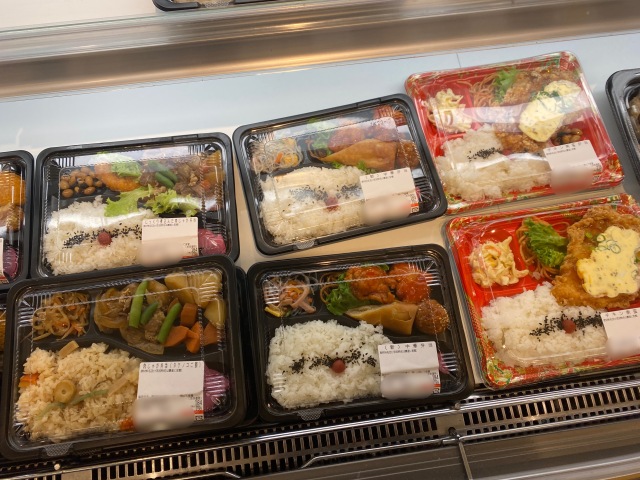
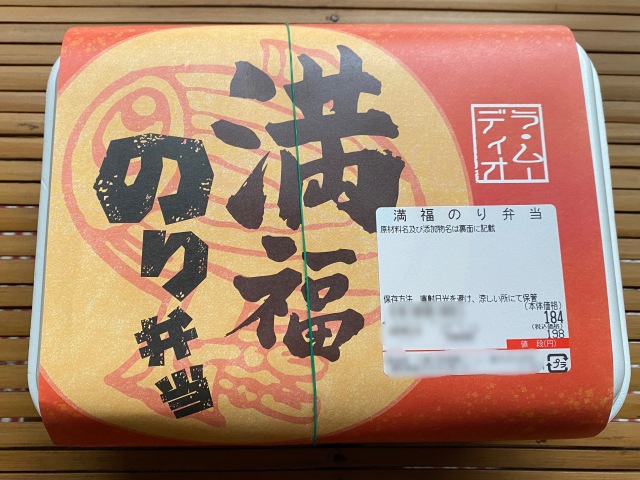
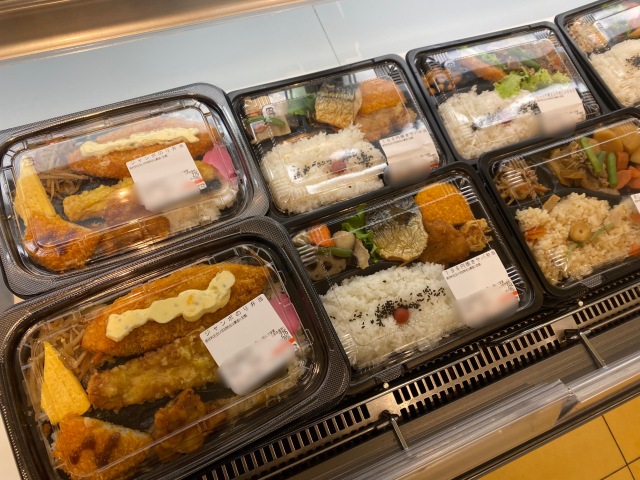
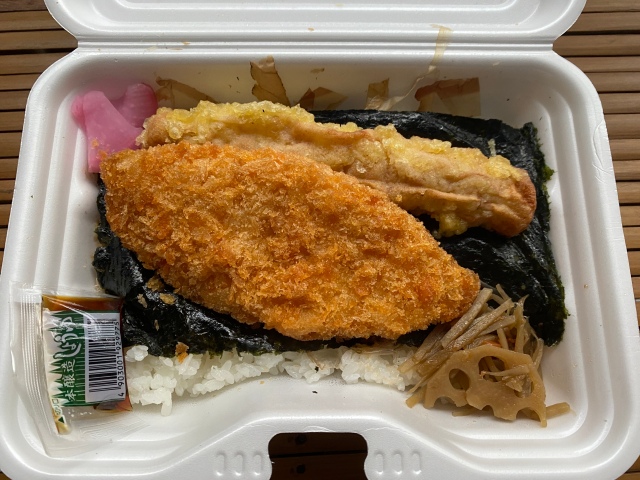
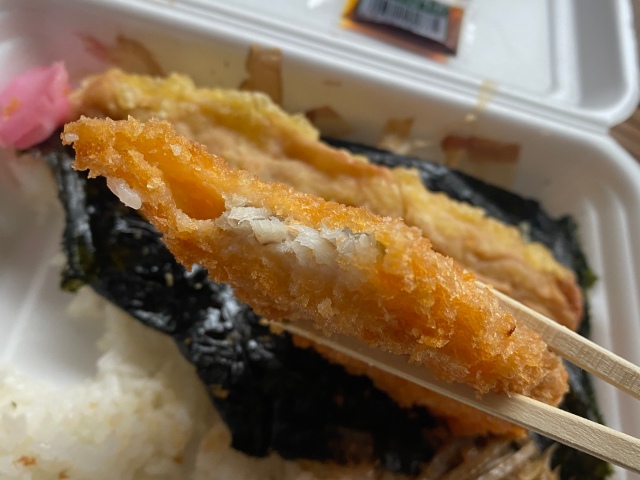
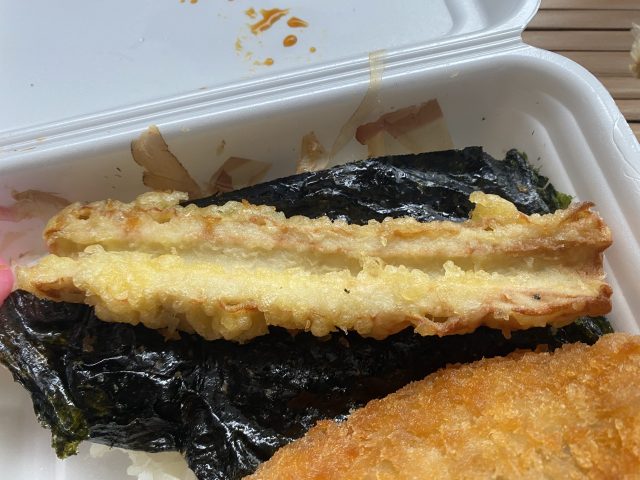
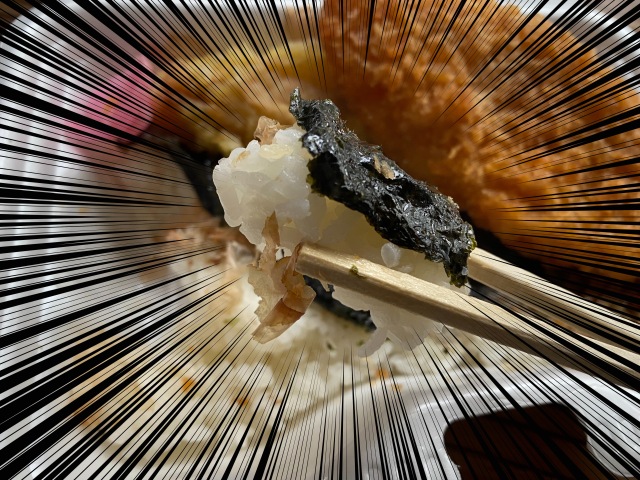
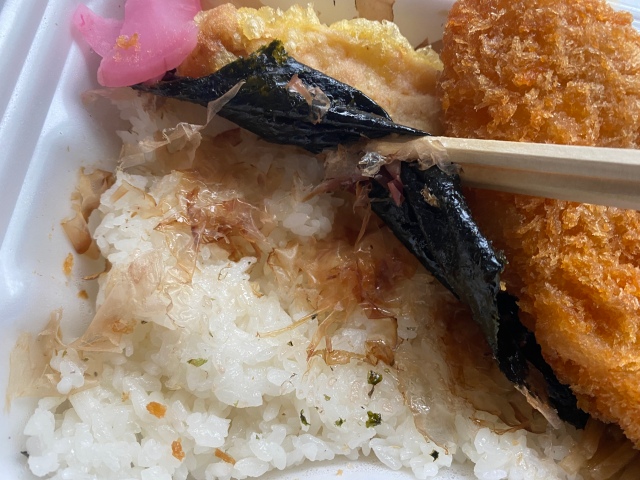
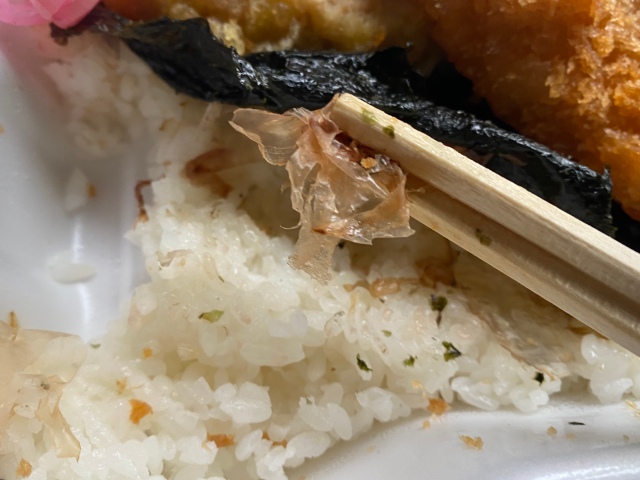
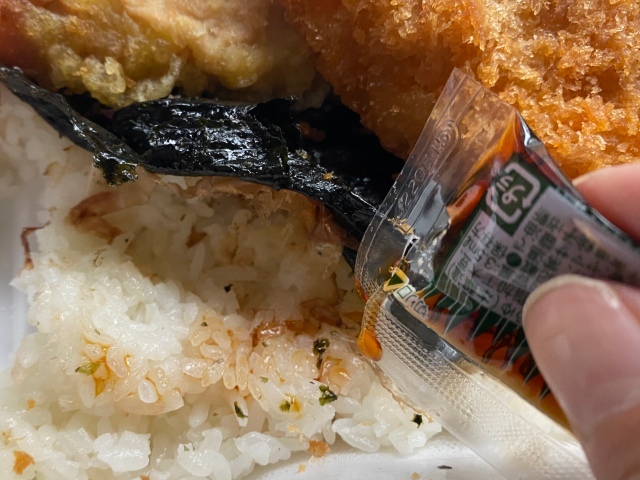
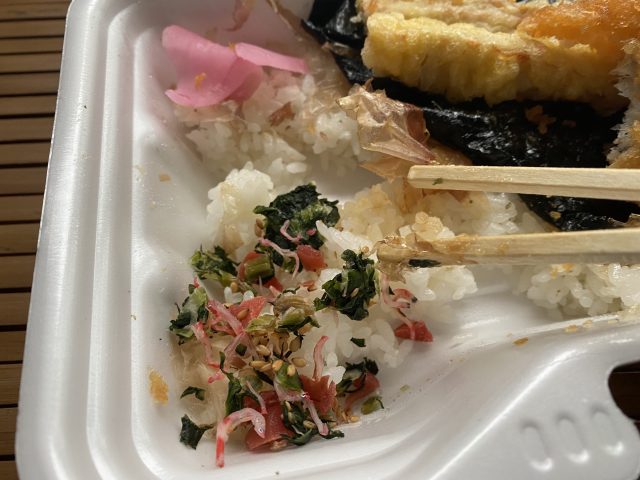
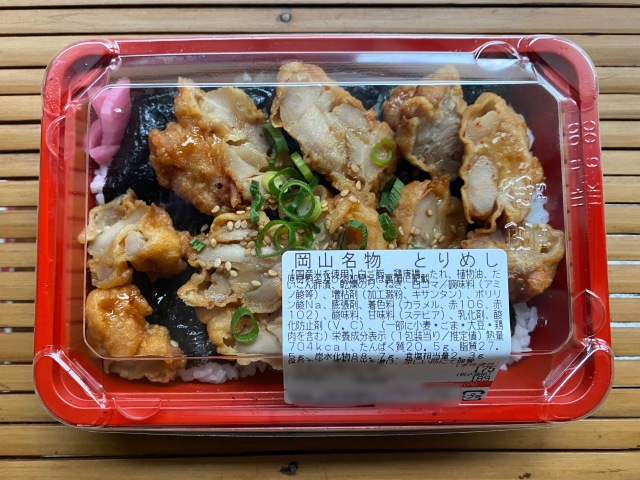
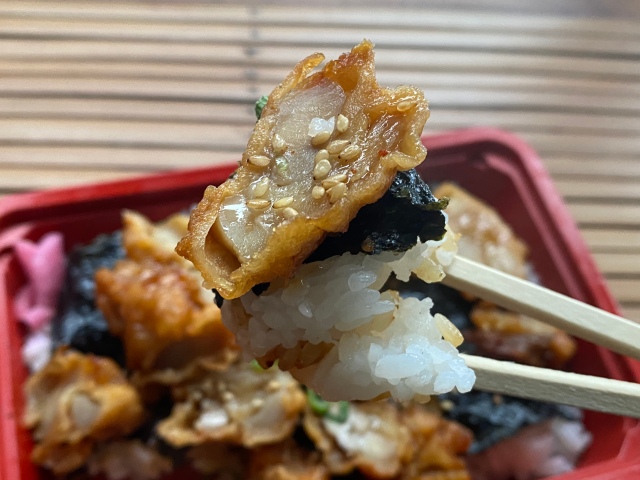
 The 5 best Japanese bento to buy at Kyoto Station
The 5 best Japanese bento to buy at Kyoto Station Japan’s big eats just got even bigger at this little-known cafe
Japan’s big eats just got even bigger at this little-known cafe Onikun: Epic onigiri so big they’re half demon, half rice ball
Onikun: Epic onigiri so big they’re half demon, half rice ball Tokyo Noriben Dog either reinvents or tarnishes the Japanese standard by putting a bento on a bun
Tokyo Noriben Dog either reinvents or tarnishes the Japanese standard by putting a bento on a bun Lawson Store 100 sells two new simple, inexpensive bento showcasing popular Japanese side dishes
Lawson Store 100 sells two new simple, inexpensive bento showcasing popular Japanese side dishes Red light district sushi restaurant in Tokyo shows us just how wrong we were about it
Red light district sushi restaurant in Tokyo shows us just how wrong we were about it Sandwiches fit for a sumo served up in Osaka【Taste Test】
Sandwiches fit for a sumo served up in Osaka【Taste Test】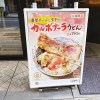 Limited-edition Carbonara Udon will anger noodle purists and pasta lovers 【Taste test】
Limited-edition Carbonara Udon will anger noodle purists and pasta lovers 【Taste test】 Japan’s massive matcha parfait weighs 6 kilos, contains hidden surprises for anyone who eats it
Japan’s massive matcha parfait weighs 6 kilos, contains hidden surprises for anyone who eats it Historical figures get manga makeovers from artists of Spy x Family, My Hero Academia and more
Historical figures get manga makeovers from artists of Spy x Family, My Hero Academia and more Beautiful Red and Blue Star luxury trains set to be Japan’s new Hokkaido travel stars
Beautiful Red and Blue Star luxury trains set to be Japan’s new Hokkaido travel stars Anime girl English teacher Ellen-sensei becomes VTuber/VVTUber and NFT
Anime girl English teacher Ellen-sensei becomes VTuber/VVTUber and NFT Pokémon Sleep camping suite and guestrooms coming to Tokyo Hyatt along with giant Snorlax burgers
Pokémon Sleep camping suite and guestrooms coming to Tokyo Hyatt along with giant Snorlax burgers Tokyo Tsukiji fish market site to be redeveloped with 50,000-seat stadium, hotel, shopping center
Tokyo Tsukiji fish market site to be redeveloped with 50,000-seat stadium, hotel, shopping center Secret Kitchen bento serves Japanese flowers, birds, wind and moon in a box, but is it worth it?
Secret Kitchen bento serves Japanese flowers, birds, wind and moon in a box, but is it worth it? McDonald’s new Happy Meals offer up cute and practical Sanrio lifestyle goods
McDonald’s new Happy Meals offer up cute and practical Sanrio lifestyle goods All-you-can-drink Starbucks and amazing views part of Tokyo’s new 170 meter-high sky lounge
All-you-can-drink Starbucks and amazing views part of Tokyo’s new 170 meter-high sky lounge More foreign tourists than ever before in history visited Japan last month
More foreign tourists than ever before in history visited Japan last month Japanese ramen restaurants under pressure from new yen banknotes
Japanese ramen restaurants under pressure from new yen banknotes French Fries Bread in Tokyo’s Shibuya becomes a hit on social media
French Fries Bread in Tokyo’s Shibuya becomes a hit on social media Studio Ghibli releases new action figures featuring Nausicaä of the Valley of the Wind characters
Studio Ghibli releases new action figures featuring Nausicaä of the Valley of the Wind characters New private rooms on Tokaido Shinkansen change the way we travel from Tokyo to Kyoto
New private rooms on Tokaido Shinkansen change the way we travel from Tokyo to Kyoto Starbucks reopens at Shibuya Scramble Crossing with new look and design concept
Starbucks reopens at Shibuya Scramble Crossing with new look and design concept Studio Ghibli glasses cases let anime characters keep an eye on your spectacles
Studio Ghibli glasses cases let anime characters keep an eye on your spectacles Beautiful Ghibli sealing wax kits let you create accessories and elegant letter decorations【Pics】
Beautiful Ghibli sealing wax kits let you create accessories and elegant letter decorations【Pics】 Studio Ghibli releases Kiki’s Delivery Service chocolate cake pouches in Japan
Studio Ghibli releases Kiki’s Delivery Service chocolate cake pouches in Japan New definition of “Japanese whiskey” goes into effect to prevent fakes from fooling overseas buyers
New definition of “Japanese whiskey” goes into effect to prevent fakes from fooling overseas buyers Our Japanese reporter visits Costco in the U.S., finds super American and very Japanese things
Our Japanese reporter visits Costco in the U.S., finds super American and very Japanese things Studio Ghibli unveils Mother’s Day gift set that captures the love in My Neighbour Totoro
Studio Ghibli unveils Mother’s Day gift set that captures the love in My Neighbour Totoro New Japanese KitKat flavour stars Sanrio characters, including Hello Kitty
New Japanese KitKat flavour stars Sanrio characters, including Hello Kitty New Pokémon cakes let you eat your way through Pikachu and all the Eevee evolutions
New Pokémon cakes let you eat your way through Pikachu and all the Eevee evolutions Disney princesses get official manga makeovers for Manga Princess Cafe opening in Tokyo
Disney princesses get official manga makeovers for Manga Princess Cafe opening in Tokyo Sales of Japan’s most convenient train ticket/shopping payment cards suspended indefinitely
Sales of Japan’s most convenient train ticket/shopping payment cards suspended indefinitely Sold-out Studio Ghibli desktop humidifiers are back so Totoro can help you through the dry season
Sold-out Studio Ghibli desktop humidifiers are back so Totoro can help you through the dry season Japanese government to make first change to romanization spelling rules since the 1950s
Japanese government to make first change to romanization spelling rules since the 1950s Ghibli founders Toshio Suzuki and Hayao Miyazaki contribute to Japanese whisky Totoro label design
Ghibli founders Toshio Suzuki and Hayao Miyazaki contribute to Japanese whisky Totoro label design Doraemon found buried at sea as scene from 1993 anime becomes real life【Photos】
Doraemon found buried at sea as scene from 1993 anime becomes real life【Photos】 Tokyo’s most famous Starbucks is closed
Tokyo’s most famous Starbucks is closed One Piece characters’ nationalities revealed, but fans have mixed opinions
One Piece characters’ nationalities revealed, but fans have mixed opinions We asked a Uniqlo employee what four things we should buy and their suggestions didn’t disappoint
We asked a Uniqlo employee what four things we should buy and their suggestions didn’t disappoint Princesses, fruits, and blacksmiths: Study reveals the 30 most unusual family names in Japan
Princesses, fruits, and blacksmiths: Study reveals the 30 most unusual family names in Japan What do hosts in Kabukicho eat after a night of working in Tokyo’s red-light district?
What do hosts in Kabukicho eat after a night of working in Tokyo’s red-light district? Have you tried Tokushima ramen? No? You should (says our obsessed Japanese-language reporter)
Have you tried Tokushima ramen? No? You should (says our obsessed Japanese-language reporter) We try European Cup Noodle Soba flavors to see which ones come out on top 【Taste test】
We try European Cup Noodle Soba flavors to see which ones come out on top 【Taste test】 “Hey Singaporean taxi driver! Take us to the best restaurant in Singapore!”
“Hey Singaporean taxi driver! Take us to the best restaurant in Singapore!” Our reporter orders food from Uber Eats, falls in love, learns that fate works in mysterious ways
Our reporter orders food from Uber Eats, falls in love, learns that fate works in mysterious ways One minute is all you need to make this popular instant noodle meal from Okayama【SoraKitchen】
One minute is all you need to make this popular instant noodle meal from Okayama【SoraKitchen】 We try a rotating sushi restaurant in New Delhi, are surprised to find no rotating sushi
We try a rotating sushi restaurant in New Delhi, are surprised to find no rotating sushi We get our hands on a coveted Yodobashi lucky bag, this time the beauty and health gadget box
We get our hands on a coveted Yodobashi lucky bag, this time the beauty and health gadget box How can you maximize the calories you burn singing karaoke?【Experiment】
How can you maximize the calories you burn singing karaoke?【Experiment】 Our Japanese language reporter gets lucky with Vietnam McDonald’s Prosperity Beef Burger
Our Japanese language reporter gets lucky with Vietnam McDonald’s Prosperity Beef Burger Do people in Osaka really eat crunchy fried noodles with curry? We ask a local, then try it out
Do people in Osaka really eat crunchy fried noodles with curry? We ask a local, then try it out Our reporters try a yakiniku sauce called “Even Women Garlic” to figure out what that means
Our reporters try a yakiniku sauce called “Even Women Garlic” to figure out what that means Anime-loving mum takes kyara-ben to a new level with these well-drawn anime bentos
Anime-loving mum takes kyara-ben to a new level with these well-drawn anime bentos Hey, Thai tuk-tuk driver! Take us to the best Thai restaurant in this part of Bangkok!
Hey, Thai tuk-tuk driver! Take us to the best Thai restaurant in this part of Bangkok! Ramen and girls bar: Where you can talk to women who aren’t dressed like hosts or maids
Ramen and girls bar: Where you can talk to women who aren’t dressed like hosts or maids
Leave a Reply